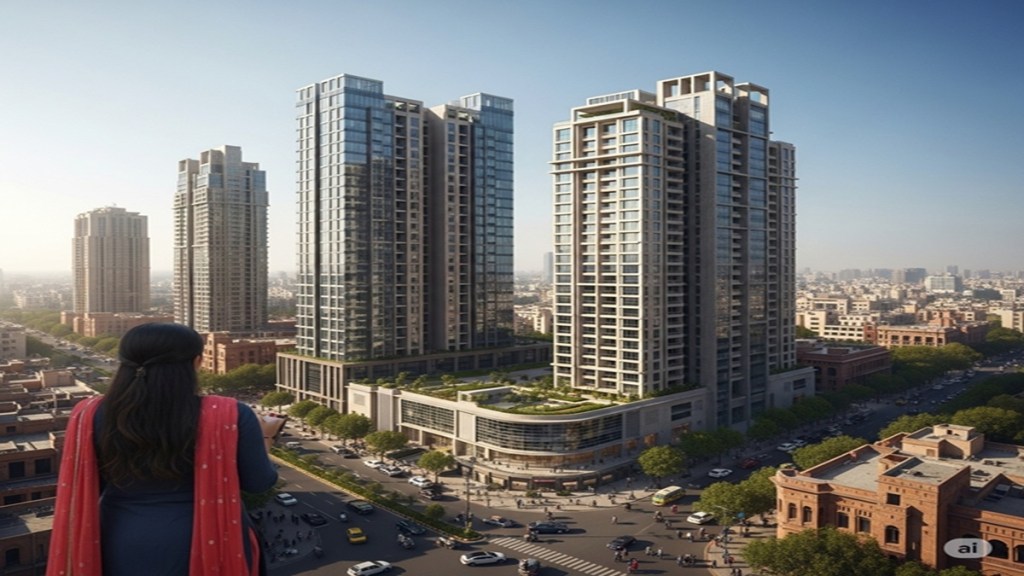India’s housing market is witnessing a major evolution. Gone are the days when buyers primarily hunted for compact, budget friendly homes. In the first six months of 2025, nearly half of all residential properties sold across the country’s top cities were priced at ₹1 crore or more. This significant shift in buyer behavior is backed by new data from Knight Frank India, which highlights a strong and growing demand for high value homes even as lower and mid range housing shows signs of slowing down.

According to the report titled India Real Estate: Office and Residential Market, the premium segment accounted for forty nine percent of all residential sales in the top eight Indian cities during the first half of this year. That translates to over eighty three thousand units sold in the one crore and above price category. In contrast, the other fifty one percent of sales came from homes under ₹1 crore, totaling nearly eighty seven thousand units. While the numbers are still close, the trajectory is clearly leaning toward more spacious, high end homes.
This shift comes at a time when developers are also ramping up launches of premium housing projects. Over one lakh seventy nine thousand new units were launched during this period, a figure that surpasses total sales. This indicates developers’ rising confidence in long term housing demand, particularly in the premium segment. It also shows that Indian real estate is no longer just about affordability. It is increasingly about lifestyle, amenities, and aspirational living.
Different cities are contributing to this trend in their own way. The National Capital Region leads the premium sales chart, where a whopping eighty one percent of all homes sold were above ₹1 crore. That means more than twenty one thousand high end units were bought in just six months. Bengaluru follows closely, with seventy percent of its total home sales falling into this segment. Mumbai, known for being India’s most expensive property market, sold over sixteen thousand premium homes, but those only made up about thirty six percent of total sales due to the city’s broader housing mix.
Even in the sub ₹1 crore category, activity remains strong in certain markets. Mumbai led in volume with over thirty thousand homes sold below the crore mark, while Ahmedabad contributed over eighteen thousand such sales. This suggests that while premium homes are in demand, there is still space for affordable housing, especially in emerging and tier two cities.
Experts point to several reasons behind this noticeable premiumisation. India’s expanding middle class, changing work habits, and a growing preference for larger living spaces post the pandemic have fueled a desire for more luxurious homes. Buyers today are not just looking at square footage but at the lifestyle a property offers be it better design, advanced security, modern facilities, or prime locations.
Additionally, policy support has helped sustain this momentum. The Reserve Bank of India’s rate cuts and increased liquidity in the market have made home loans more accessible. These measures have supported homebuyers across all categories, but their impact is especially visible in the premium space, where even a slight interest rate benefit can mean savings worth lakhs.
Developers, on their part, are increasingly catering to this demand by focusing on upscale projects. The emphasis has shifted toward integrated townships, gated communities, and tech enabled homes. This not only matches changing buyer expectations but also offers better margins for builders in a competitive market.
While the upward movement in prices may raise concerns about affordability for first time homebuyers, the overall trend signals a maturing real estate sector. As income levels rise and urbanization spreads, the desire for quality living spaces is becoming central to India’s housing choices. The days of seeing housing only as a necessity may be fading. For many, it is now also about status, comfort, and future value.
Whether you are planning to buy your first home or looking to invest in real estate, understanding these shifts in the housing market is more crucial than ever. The growing tilt towards high value homes highlights the importance of timing, planning, and financial preparedness.
Follow You Finance on Instagram and Facebook for more real estate insights, expert analysis, and daily tips to make smarter financial choices in 2025 and beyond.
















